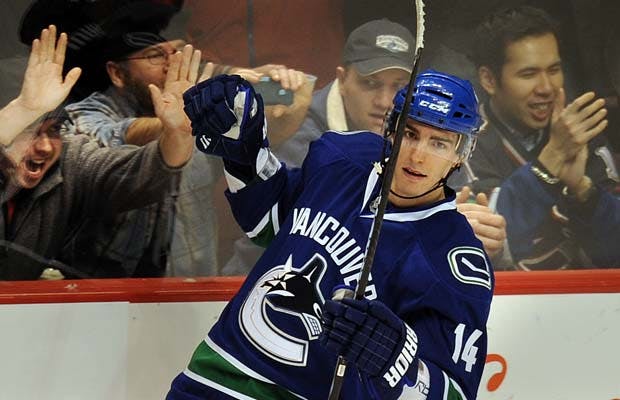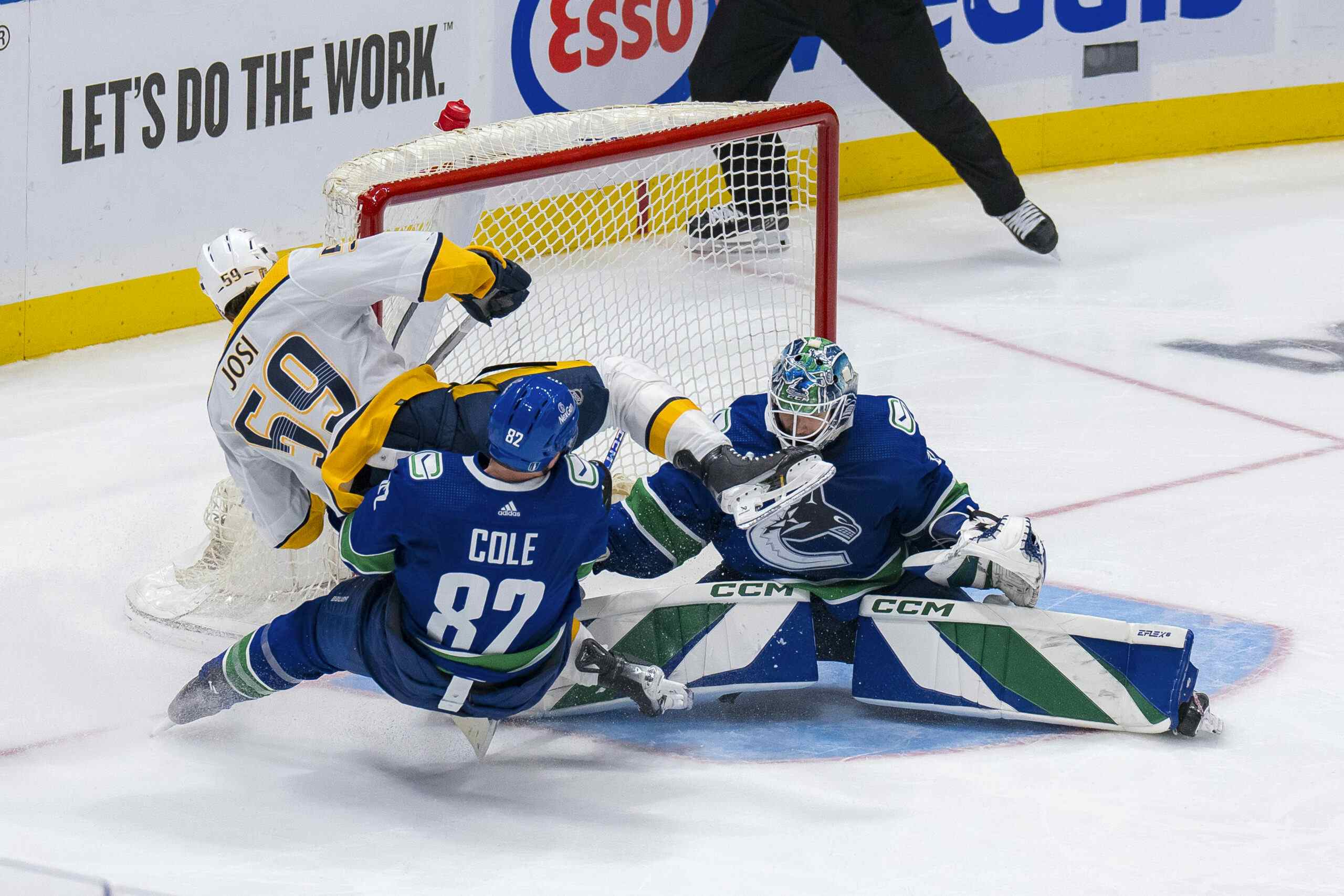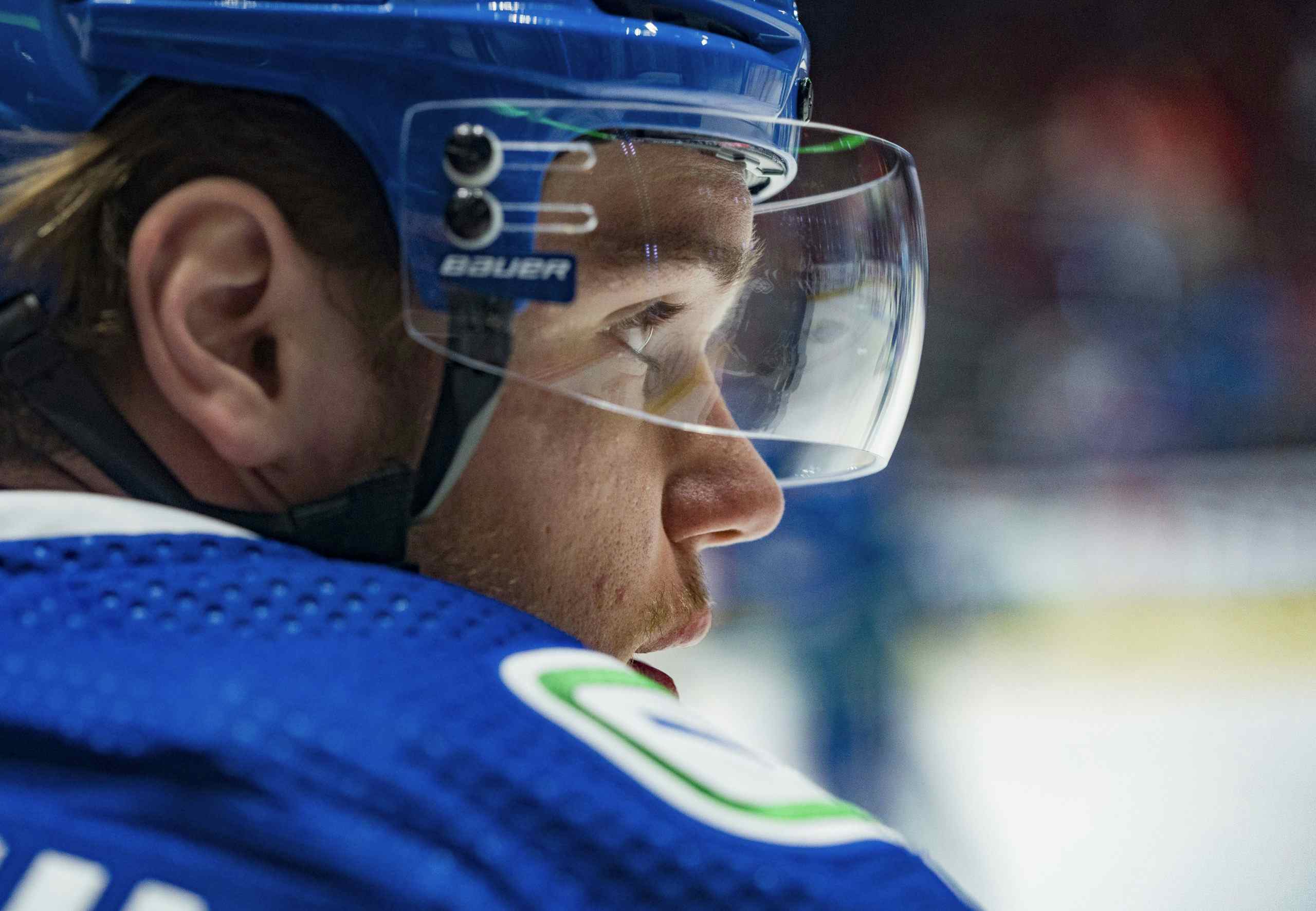Alex Burrows’ Next Contract

When you look at his production, Alex Burrows appears to be a bonafide top-line forward and an elite offensive talent. In the past four seasons, for example, he has recorded as many five-on-five markers as Corey Perry (97), and he’s scored more often than the likes of elite-wingers Phil Kessel, James Neil and Zach Parise* over that time frame. He’s been the tenth most efficient even-strength goal scorer over the past handful of seasons, and no one else on that list made anywhere in the neighbourhood of the 2 million per that Burrows has brought home the past three seasons.
(*) Zach Parise’s inclusion should be qualified since he missed the majority of the 2010-11 campaign.
Burrows scores like Perry, but gets paid like Alexei Ponikarovsky, and with his contract expiring after the 2011-12 season, he’s clearly in-line for a sizable raise either this summer, or next. Of course, because Burrows has scored so many of his goals playing with two of the best passing forwards in the game, it’s tough to determine how much value he brings on his own.
Read past the jump.
There’s no doubt that Burrows’ is a legitimate top-six forward at the NHL level, but production aside, I don’t think Burrows brings "elite offensive forward" value to a hockey club. It’s that gap between Burrows’ "true talent" and his sky-high production that will make his next contract so interesting.
Over the past three seasons, the twins and Alex Burrows have been joined at the hip. Occasionally the likes of Jannik Hansen or Mikael Samuelsson have been given Burrows’ assignment for a few games, but Burrows and the twins are a pretty solid unit. Burrows has spent only about 600 of his even-strength minutes skating without the twins over the past three seasons, which, just isn’t a big enough sample to really tell us much of anything.
So let’s go back to the 2008-09 campaign, which, gives us a roughly 1400 minute sample to work with (in terms of Burrows’ Sedin independent ice-time) and run a With or Without You (WOWY) test. The below table is broken down in terms of ice-time, Corsi percentage and goal differential (rated per sixty minutes).
For newer readers, or those who are skeptical of advanced analysis in hockey, a "Corsi" number is simply an expanded plus/minus number that counts all on-ice events (shots, missed shots, goals, blocked shots) rather than simply goals. By counting a larger sample of occurrences, Corsi is a crude tool to measure offensive zone ice-time and gives us a clearer view of which players are winning the on-ice battles or making the smart plays that contribute to quality puck possession. All of the numbers that appear in the table below are taken from David Johnston’s excellent Hockey Analysis site.
One final qualifier, I used Henrik and Burrows rather than Daniel-Burrows for the WOWY because Henrik Sedin never ever misses a game, so the sample is somewhat larger.
| 2008-09 to 2011-12 | TOI | Corsi % | GF | GA | GF/60 | GA/60 | Differential | Diff/60 |
|---|---|---|---|---|---|---|---|---|
| Burrows With Henrik | 2772: 41 | 57.26 | 169 | 88 | 3.66 | 1.9 | +81 | +1.76 |
| Burrows Without Henrik | 1367: 59 | 50.9 | 48 | 51 | 2.11 | 2.24 | – 3 | – 0.13 |
| Henrik Without Burrows | 1787: 59 | 53.48 | 105 | 70 | 3.52 | 2.35 | +35 | +1.17 |
Well isn’t it a surprise that Alex Burrows isn’t exactly "driving the bus" offensively on Vancouver’s top-line!
As you can see, it’s the twins who make the top-line special – both from the perspective of offensive production and puck possession. The gap in Corsi percentage should be qualified, however, since the Sedins are deployed almost exclusively in the offensive end no matter what, whereas Burrows is likely to play in a more two-way role (usually with Kesler) when he’s removed from the top-line. Nonetheless, it’s clear that Burrows’ isn’t quite an elite offensive talent when he’s deployed without the twins.
That said, the twins are more productive with Burrows on the ice than they are without him, they’re better at driving play and they give up significantly less the other way. The Sedin twins are the celebrated All-Stars for a reason, but it’s also clear from both the numbers and the eye-test, that Burrows’ presence does something to amplify their effectiveness.
Truly elite offensive talent, or not, what Burrows brings to the table is pretty significant: he’s a plus possession player who is consistently in the top-25 in even-strength goal scoring. He’s also dynamite on the penalty-kill, is known for being "clutch" (despite clutch not existing), and has a special type of chemistry with the twins. On the negative side, Burrows has got a bad reputation around the league as an occasional cheap-shot artist and embellisher, and he’s not a particularly effective power-play presence, but those are minor quibbles and do nothing to negate his all around positive value.
So where should we expect Burrows’ future cap-hit to end up? You have to think he’s worth at least Brandon Dubinsky/Scott Hartnell money (4.2 cap-hit), though if Shane Doan and his relatively meagre production is going to be worth 7+ million on the open market, then all bets are off.
Ideally, the Canucks will try and get Burrows to take a hometown discount, and sign for something like 3 years at between 13 and 15 million (that would give him a cap-hit in between 4.33 and 5 million), even though he’s probably worth well north of that.
If that number gives you sticker shock, consider that what Burrows brings to the table in terms of his play with the twins and his defensive reliability, tends to be expensive to replace through trade or free-agency. Also, unlike with a player like Alex Edler, Burrows’ consistency is uncanny. While he’s getting up there in age and will turn 32 next season, I don’t think I’d hesitate to lock Burrows up for two or three more seasons at somewhere in the neighbourhood of 4.5 million per season.
Recent articles from Thomas Drance





